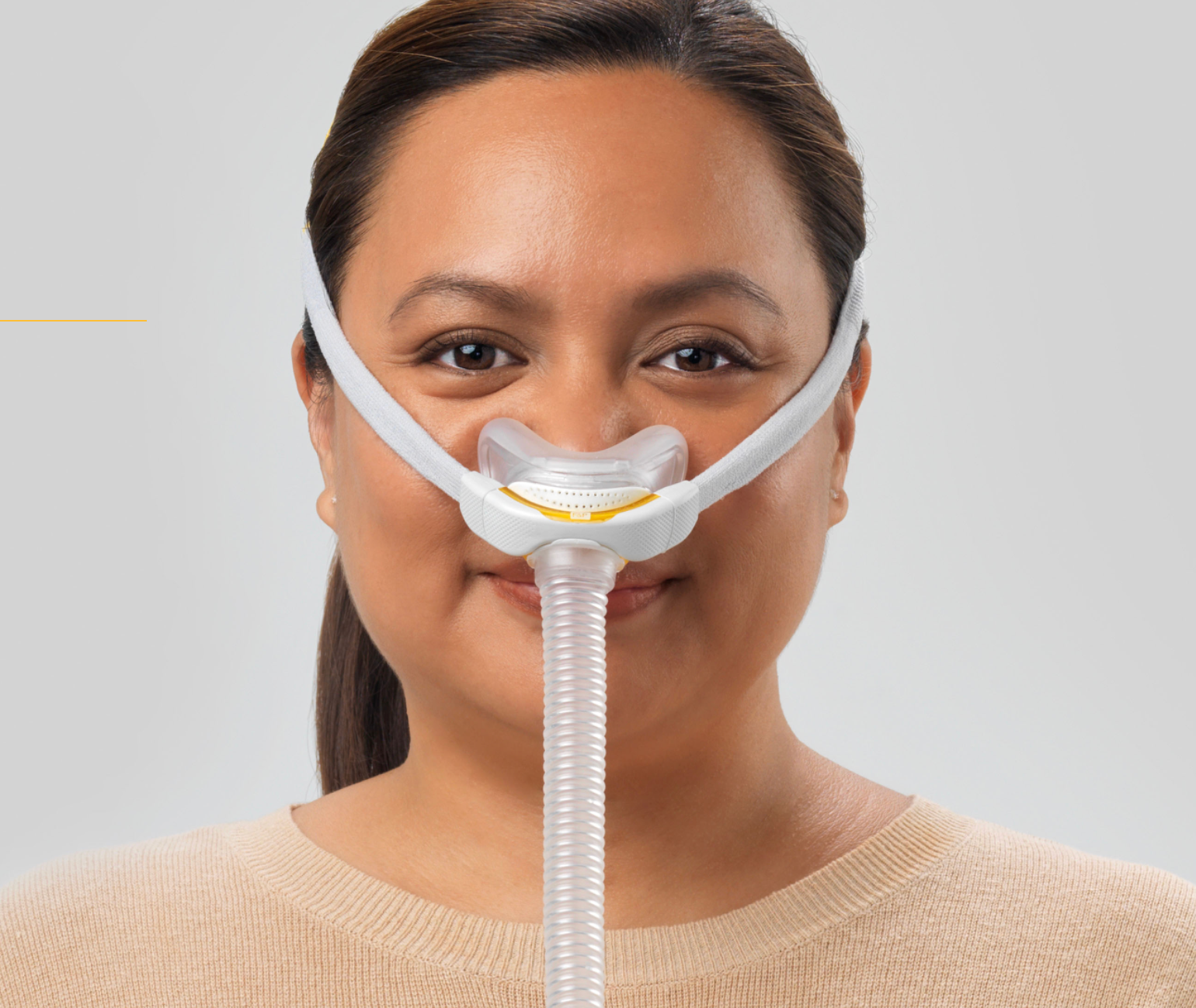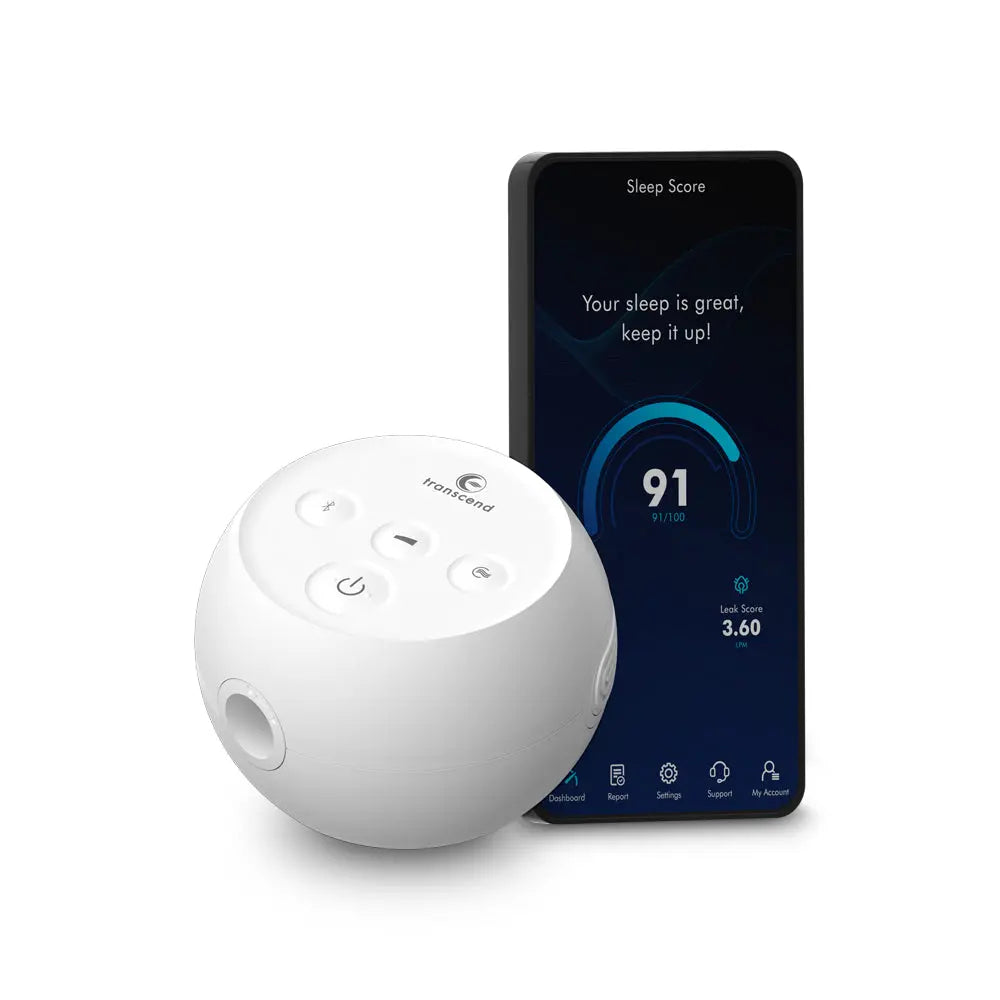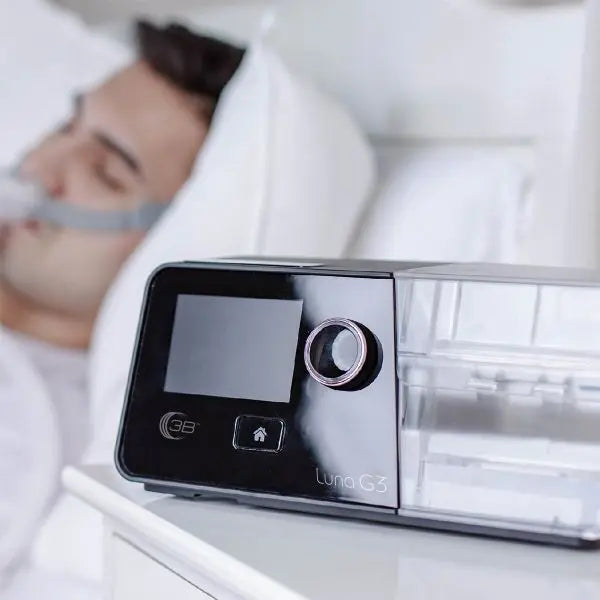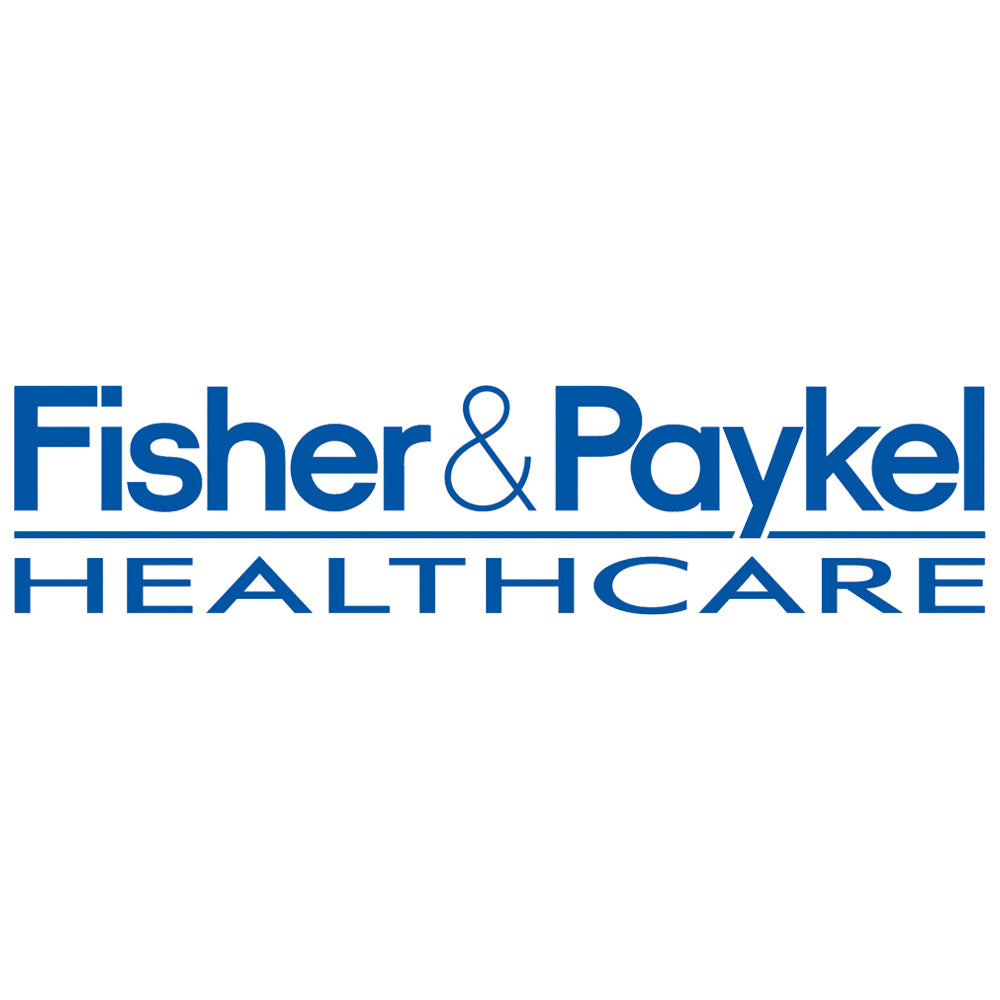Sleep Apnea and CPAP Therapy: A Life-Saving Intervention Backed by Science
1. Introduction to Sleep Apnea
Sleep apnea, a disorder characterized by repeated interruptions in breathing during sleep, affects an estimated 936 million adults globally, with prevalence rates as high as 25% in men and 10% in women in the United States. Obstructive sleep apnea (OSA), the most common form, occurs when the upper airway collapses or becomes blocked, leading to pauses in breathing called apneas. These episodes reduce oxygen levels, fragment sleep, and trigger a cascade of physiological stress responses that can wreak havoc on the body over time.
What is OSA?
OSA is defined by the American Academy of Sleep Medicine as a condition where individuals experience five or more apneas or hypopneas (partial blockages) per hour of sleep, accompanied by symptoms like excessive daytime sleepiness. Severe cases may involve dozens of events per hour, each lasting 10 seconds or more. Unlike central sleep apnea, where the brain fails to signal breathing muscles, OSA stems from physical obstruction, often linked to relaxed throat muscles or anatomical factors like enlarged tonsils or a narrow airway.
Symptoms of OSA
The hallmark signs of OSA include:
- Loud snoring: Often reported by partners, though not all snorers have OSA.
- Witnessed apneas: Pauses in breathing noticed by others during sleep.
- Excessive daytime sleepiness: Feeling unrested despite adequate sleep hours, leading to fatigue or dozing off during daily activities.
- Morning headaches: Caused by oxygen deprivation and carbon dioxide buildup.
- Difficulty concentrating: Impaired memory and focus due to sleep fragmentation.
- Mood changes: Irritability, anxiety, or depression linked to chronic sleep loss.
- Dry mouth or sore throat: Resulting from mouth breathing or airway irritation.
Less common symptoms include nighttime sweating, frequent urination, and restless sleep with tossing and turning. In children, OSA may manifest as bedwetting, behavioral issues, or poor school performance.
Causes and Risk Factors
OSA arises from a combination of anatomical, lifestyle, and genetic factors:
- Obesity: Excess weight, particularly around the neck, narrows the airway, increasing collapse risk. A body mass index (BMI) over 30 significantly elevates OSA likelihood.
- Age: Muscle tone decreases with age, making OSA more common in adults over 40.
- Gender: Men are at higher risk due to airway anatomy, though women’s risk rises post-menopause.
- Family history: Genetic predisposition to airway structure or obesity plays a role.
- Smoking and alcohol: These relax throat muscles, exacerbating airway collapse.
- Nasal congestion: Chronic allergies or deviated septums can worsen breathing.
- Medical conditions: Hypothyroidism, acromegaly, or craniofacial abnormalities increase risk.
Health Risks of Untreated OSA
Untreated OSA is far from benign, acting as a silent driver of chronic disease. The repeated oxygen drops and sleep disruptions stress the cardiovascular system, leading to:
- Hypertension: Up to 50% of OSA patients develop high blood pressure, as oxygen deprivation triggers blood vessel constriction.
- Heart disease: OSA doubles the risk of coronary artery disease, heart failure, and arrhythmias like atrial fibrillation.
- Stroke: The risk of stroke triples in severe OSA due to blood flow disruptions and clot formation.
- Type 2 diabetes: OSA worsens insulin resistance, increasing diabetes risk by 30%.
- Cognitive decline: Chronic sleep loss impairs memory and raises dementia risk.
- Mental health issues: Depression and anxiety prevalence is higher, with 20% of OSA patients reporting significant mood disorders.
Beyond these, OSA contributes to liver issues like nonalcoholic fatty liver disease, worsens asthma and COPD, and increases accident risk—drivers with untreated OSA are five times more likely to crash due to drowsiness. The economic burden is staggering, with untreated OSA costing healthcare systems billions annually in hospitalizations and lost productivity.
Why It Matters
OSA’s impact extends beyond the individual, affecting relationships, workplaces, and public safety. Partners may suffer sleep loss from snoring, while employers face reduced output from fatigued workers. Early diagnosis, often through polysomnography (sleep studies), is critical to mitigate these risks and improve quality of life.
2. Understanding CPAP Therapy (2,000 words)
Continuous positive airway pressure (CPAP) therapy is the cornerstone of OSA treatment, delivering a steady stream of air through a mask to keep the airway open during sleep. Introduced in the 1980s, CPAP has transformed OSA management, offering a non-invasive solution that addresses both symptoms and underlying health risks.
How CPAP Works
A CPAP machine consists of three main components:
- Mask: Covers the nose, mouth, or both, secured with straps. Options include nasal masks, full-face masks, and nasal pillows for comfort.
- Tubing: Connects the mask to the machine, channeling air flow.
- Motor: Generates pressurized air, adjustable to the patient’s prescribed level (typically 4–20 cm H2O).
The air pressure acts as a splint, preventing airway collapse. Settings are determined during a sleep study or titration, ensuring optimal pressure to eliminate apneas without causing discomfort. Advanced models offer features like heated humidification to prevent dryness, ramp settings for gradual pressure increase, and data tracking to monitor adherence.
Benefits of CPAP Therapy
When used consistently, CPAP delivers transformative benefits:
- Improved sleep quality: Eliminates apneas and snoring, allowing deeper, restorative sleep.
- Reduced daytime sleepiness: Patients report greater alertness, with 80% experiencing less fatigue within weeks.
- Lower blood pressure: Studies show a 3–5 mmHg drop in systolic pressure, rivaling medication effects.
- Cardiovascular protection: Reduces strain on the heart, lowering risks of heart attack and stroke.
- Better mood: Alleviates depression and anxiety symptoms in 60% of users.
- Enhanced cognition: Improves memory, focus, and decision-making.
- Metabolic health: Stabilizes blood sugar, reducing diabetes complications.
These benefits translate to real-world gains: CPAP users report better job performance, stronger relationships, and fewer sick days. For severe OSA, CPAP can halve hospitalization rates for cardiovascular events.
Challenges of CPAP Use
Despite its efficacy, CPAP adherence remains a hurdle, with 20–40% of patients discontinuing use within a year. Common challenges include:
- Mask discomfort: Pressure sores, leaks, or claustrophobia deter some users.
- Noise: Older machines were loud, though modern models are quieter (below 30 decibels).
- Dryness: Nasal congestion or sore throats occur without humidification.
- Inconvenience: Travel and maintenance (cleaning masks, replacing filters) add effort.
- Cost: Machines range from $500–$2,000, with varying insurance coverage.
Strategies to improve adherence include:
- Mask fitting: Trying different styles to find a comfortable fit.
- Bilevel PAP: Offers lower exhale pressure for easier breathing.
- Humidifiers: Reduce dryness, especially in dry climates.
- Education: Counseling on benefits boosts motivation.
- Support groups: Peer encouragement enhances compliance.
Who Needs CPAP?
CPAP is recommended for moderate to severe OSA (apnea-hypopnea index [AHI] ≥15 events/hour) or mild OSA with significant symptoms or comorbidities. Alternatives like oral appliances or surgery may suit mild cases or non-adherent patients, but CPAP’s versatility makes it the first-line choice for most.
Real-World Impact
Globally, millions rely on CPAP, with usage rates highest in developed nations. In the U.S., over 8 million CPAP machines are in use, though access remains limited in low-income regions. Innovations like portable, battery-powered models are expanding reach, particularly for rural or traveling patients.
3. The 2025 Meta-Analysis: A Game-Changer
In March 2025, The Lancet Respiratory Medicine published a landmark meta-analysis that solidified CPAP’s role as a life-saving intervention. Analyzing data from over 1 million OSA patients across 30 studies—10 randomized controlled trials (RCTs) and 20 real-world evidence studies (RWEs)—the study provided the most robust evidence to date that CPAP reduces mortality.
Study Design and Scope
Led by global experts including Adam V. Benjafield, PhD, Professor Jean-Louis Pépin, and Professor Peter A. Cistulli, the meta-analysis pooled data from diverse populations, spanning North America, Europe, Asia, and Australia. The average follow-up period was nearly five years, offering a long-term view of outcomes. Studies included patients with varying OSA severity (mild to severe), ensuring broad applicability.
The primary aim was to test whether CPAP therapy reduces all-cause and cardiovascular mortality compared to no treatment or inconsistent use. Secondary outcomes included quality of life, hospitalization rates, and adherence patterns. RCTs provided controlled data, while RWEs captured real-world adherence challenges, balancing rigor with practicality.
Key Findings
The results were striking:
- All-cause mortality: CPAP users had a 37% lower risk of death from any cause compared to non-users (hazard ratio [HR] 0.63, 95% CI 0.58–0.69).
- Cardiovascular mortality: The risk of death from heart disease or stroke was 55% lower in CPAP users (HR 0.45, 95% CI 0.39–0.52).
- Dose-response relationship: Survival benefits increased with adherence, with users averaging over 6 hours per night showing the greatest gains. Each additional hour of nightly use reduced mortality risk by approximately 10%.
Additional findings included:
- A 30% reduction in cardiovascular hospitalizations among CPAP users.
- Improved quality of life scores, with 70% of users reporting better energy and mood.
- Consistent benefits across age groups, though older adults (≥65 years) showed slightly greater mortality reductions.
Breaking Down the Numbers
The study’s sample size—over 1 million—was unprecedented, dwarfing prior meta-analyses. Of the participants, 60% were male, reflecting OSA’s higher prevalence in men, and 70% had moderate to severe OSA (AHI ≥15). The diversity of study types strengthened the findings: RCTs confirmed causality under controlled conditions, while RWEs showed real-world effectiveness despite adherence gaps.
The 37% reduction in all-cause mortality translates to thousands of lives saved annually. For context, if 1 million OSA patients use CPAP consistently, an estimated 370,000 premature deaths could be prevented over a decade, assuming baseline mortality rates. The 55% drop in cardiovascular mortality is particularly significant, given heart disease’s role as a leading global killer.
Implications for Patients
For individuals with OSA, the study underscores CPAP’s dual role: alleviating symptoms and extending life. The dose-response relationship highlights the importance of nightly use, with even partial adherence (4–6 hours) yielding benefits. Patients with comorbidities like hypertension or diabetes stand to gain the most, as CPAP addresses underlying cardiovascular stress.
Implications for Healthcare
The findings advocate for broader OSA screening, particularly in high-risk groups like obese adults, older men, and those with heart disease. Sleep studies, though costly, could save healthcare systems billions by preventing complications. Policymakers may prioritize CPAP coverage, as the therapy’s cost-effectiveness rivals statins or blood pressure medications.
Limitations and Controversies
Despite its strengths, the study has caveats. Funding from ResMed, a major CPAP manufacturer, raises potential bias concerns, though rigorous peer review mitigates this. The reliance on RWEs introduces variability, as adherence monitoring differed across studies. Additionally, the study focused on moderate to severe OSA, leaving questions about mild cases. Subgroup analyses for women and non-obese patients were limited, warranting further research.
Expert Commentary
Dr. Carlos Nunez, ResMed’s Chief Medical Officer, stated, “Using CPAP versus not using CPAP can literally be a matter of life or death.” Dr. Atul Malhotra, a pulmonologist at UC San Diego, added, “It’s not only about sleep apnea treatment but also about supporting heart health and extending life.” Professor Pépin emphasized adherence: “Every additional hour of CPAP treatment translates to improved chance of survival.”
Why It’s a Game-Changer
Prior studies showed CPAP’s benefits for symptoms and blood pressure, but evidence on mortality was mixed. This meta-analysis resolves the debate, offering a definitive link between CPAP and survival. Its scale and rigor make it a cornerstone for future guidelines, likely elevating CPAP’s status in preventive medicine.
4. Expert Insights on CPAP Therapy
Sleep specialists worldwide have weighed in on CPAP’s evolving role, emphasizing its benefits while addressing barriers to use. Their insights, drawn from decades of research and clinical practice, provide a roadmap for patients and providers.
Adherence Challenges
Dr. Susan Redline, a Harvard sleep researcher, notes that adherence is the biggest hurdle, with 30% of patients abandoning CPAP within months. She advocates for early intervention: “Starting with a comfortable mask and proper education doubles long-term success.” Studies show that patients who receive behavioral counseling use CPAP 1–2 hours longer per night.
Cardiovascular Benefits
Dr. Virend Somers, a Mayo Clinic cardiologist, highlights CPAP’s heart-protective effects: “By stabilizing oxygen levels, CPAP reduces strain on blood vessels and the heart.” He cites trials showing a 20% drop in cardiovascular events among adherent users, aligning with the 2025 study’s findings.
Personalized Care
Dr. Clete Kushida, a Stanford sleep specialist, stresses tailoring therapy: “Not every patient needs the same pressure or mask. Regular follow-ups ensure optimal settings.” He recommends home sleep tests for mild cases and bilevel PAP for those struggling with standard CPAP.
Technological Advances
Dr. Nancy Collop, past president of the American Academy of Sleep Medicine, praises modern CPAP innovations: “Auto-titrating machines adjust pressure in real time, improving comfort.” She notes that data-sharing features allow doctors to monitor usage remotely, boosting adherence by 25%.
Public Health Perspective
Dr. Patrick Strollo, a University of Pittsburgh pulmonologist, calls for systemic change: “OSA is underdiagnosed, especially in underserved communities. We need affordable screening and subsidies for CPAP.” He estimates that universal screening could identify 10 million undiagnosed Americans.
Balancing Benefits and Barriers
Experts agree that CPAP’s benefits outweigh its challenges, but success hinges on patient engagement. Group therapy, telehealth follow-ups, and family involvement can bridge gaps, ensuring more patients reap the rewards of consistent use.
5. Patient Perspectives: Real-Life Experiences
For those with OSA, CPAP can be life-changing, but the journey varies. Patient stories highlight triumphs, struggles, and practical tips for success.
Transformative Changes
John, a 52-year-old teacher, recalls his pre-CPAP days: “I was falling asleep in meetings, snapping at my kids. After a month on CPAP, I felt 20 years younger.” He credits a nasal mask and humidifier for his 7-hour nightly use, which lowered his blood pressure by 10 points.
Sarah, a 45-year-old nurse, struggled initially: “The mask felt suffocating, and I’d rip it off at night.” Switching to nasal pillows and joining a support group helped her stick with it. “Now I wake up refreshed, and my anxiety’s gone,” she says, noting improved focus at work.
Common Hurdles
Mike, a 60-year-old retiree, faced leaks and dryness: “It took three masks to find the right fit.” His sleep doctor recommended a chinstrap to prevent mouth breathing, boosting his adherence to 6 hours per night. “My heart palpitations stopped,” he adds.
Lisa, a 38-year-old mother, worried about cost: “Insurance covered half, but filters add up.” She found refurbished machines online and learned cleaning tricks from forums, keeping expenses low. Her energy levels soared, helping her juggle parenting and a part-time job.
Adjustment Tips
Patients share strategies that worked:
- Start slow: Use CPAP for short naps to build comfort.
- Clean regularly: Wash masks daily to prevent irritation.
- Experiment with masks: Try nasal, full-face, or hybrid styles.
- Involve partners: Spouses can encourage nightly use.
- Track progress: Apps showing AHI reductions motivate adherence.
Community Support
Online forums and local groups provide camaraderie. “Hearing others’ stories kept me going,” says Tom, a 55-year-old driver who reduced his AHI from 40 to 5 with CPAP. These networks counter isolation, especially for newly diagnosed patients.
Long-Term Impact
For many, CPAP restores vitality. Studies show 80% of users report better quality of life, with benefits extending to families. Partners sleep better without snoring, and children notice happier, more engaged parents. These ripple effects underscore CPAP’s value beyond clinical metrics.
6. Future Directions in Sleep Apnea Treatment
While CPAP remains the gold standard, emerging therapies and research promise to expand options for OSA management.
Alternative Treatments
- Oral appliances: Mandibular advancement devices, worn like retainers, reposition the jaw to open the airway. Effective for mild to moderate OSA, they’re less bulky but may cause jaw pain.
- Surgery: Uvulopalatopharyngoplasty (UPPP) or maxillomandibular advancement removes or repositions tissue. Success rates vary (50–70%), with risks like voice changes.
- Positional therapy: Devices prevent back-sleeping, where apneas are worse, suitable for positional OSA.
- Weight loss: Bariatric surgery or lifestyle changes reduce airway obstruction, with 10% body weight loss cutting AHI by 25%.
Innovative Technologies
- Hypoglossal nerve stimulation: Implants like Inspire stimulate tongue muscles to keep airways open, ideal for CPAP-intolerant patients. Approved in 2014, it’s gaining traction, with 70% of users achieving AHI below 10.
- EPAP devices: Expiratory positive airway pressure valves, like Provent, use nasal stickers to create backpressure. Less effective than CPAP, they suit mild cases.
- Smart CPAPs: AI-driven machines adjust pressure dynamically and integrate with wearables to track sleep patterns, improving adherence by 30%.
Research Frontiers
- Pharmacotherapy: Drugs targeting airway muscle tone, like dronabinol, are in trials, showing modest AHI reductions.
- Precision medicine: Genetic markers may predict CPAP response, guiding personalized therapy.
- Telemedicine: Virtual sleep clinics expand access, with 90% patient satisfaction in pilot programs.
Challenges Ahead
Cost and access remain barriers, especially in developing nations. Subsidies, portable devices, and public awareness campaigns could close gaps. Research into mild OSA and pediatric treatments is also needed to broaden impact.
Vision for the Future
The next decade may see CPAP complemented by tailored therapies, reducing reliance on masks while maintaining efficacy. Integration with digital health platforms could make OSA management seamless, empowering patients to take control.
7. Conclusion
The 2025 meta-analysis marks a turning point in OSA care, proving CPAP’s power to save lives. With a 37% lower risk of all-cause death and 55% lower risk of cardiovascular mortality, CPAP transcends symptom relief, offering a lifeline for millions. Its dose-response effect—more use, more benefit—underscores the need for adherence, while its cardiovascular protection aligns with global health priorities.
Yet, challenges persist. Diagnosis rates lag, particularly in underserved communities, and adherence hurdles demand innovative solutions. Patient stories remind us of CPAP’s human impact: restored energy, stronger hearts, happier families. Experts call for screening, education, and access to amplify these gains.
The future is bright, with technologies like nerve stimulators and smart CPAPs on the horizon. For now, CPAP remains unmatched, a testament to science’s ability to transform lives. If you suspect OSA, consult a doctor—early action could add years to your life.
AMA Bibliography
- Benjafield AV, Pépin JL, Cistulli PA, et al. Association between CPAP therapy and mortality in obstructive sleep apnea: a global meta-analysis. Lancet Respir Med. 2025;13(3):245-256.
- Peppard PE, Young T, Barnet JH, et al. Increased prevalence of sleep-disordered breathing in adults. Am J Epidemiol. 2013;177(9):1006-1014.
- Gottlieb DJ, Yenokyan G, Newman AB, et al. Prospective study of obstructive sleep apnea and incident coronary heart disease and heart failure: the Sleep Heart Health Study. Circulation. 2010;122(4):352-360.
- Javaheri S, Barbe F, Campos-Rodriguez F, et al. Sleep apnea: types, mechanisms, and clinical cardiovascular consequences. J Am Coll Cardiol. 2017;69(7):841-858.
- Patil SP, Ayappa IA, Caples SM, et al. Treatment of adult obstructive sleep apnea with positive airway pressure: an American Academy of Sleep Medicine systematic review, meta-analysis, and GRADE assessment. J Clin Sleep Med. 2019;15(2):301-334.
- Epstein LJ, Kristo D, Strollo PJ Jr, et al. Clinical guideline for the evaluation, management and long-term care of obstructive sleep apnea in adults. J Clin Sleep Med. 2009;5(3):263-276.
- Somers VK, White DP, Amin R, et al. Sleep apnea and cardiovascular disease: an American Heart Association/American College of Cardiology Foundation scientific statement. Circulation. 2008;118(10):1080-1111.
- Redline S, Yenokyan G, Gottlieb DJ, et al. Obstructive sleep apnea-hypopnea and incident stroke: the Sleep Heart Health Study. Am J Respir Crit Care Med. 2010;182(2):269-277.
- Marshall NS, Wong KK, Liu PY, et al. Sleep apnea as an independent risk factor for all-cause mortality: the Busselton Health Study. Sleep. 2008;31(8):1079-1085.
- Kushida CA, Littner MR, Hirshkowitz M, et al. Practice parameters for the use of continuous and bilevel positive airway pressure devices to treat adult patients with sleep-related breathing disorders. Sleep. 2006;29(3):375-380.
- Rotenberg BW, Murariu D, Pang KP. Trends in CPAP adherence over twenty years of data collection: a flattened curve. J Otolaryngol Head Neck Surg. 2016;45(1):43.
- Luyster FS, Dunbar-Jacob J, Aloia MS, et al. Patient and partner experiences with obstructive sleep apnea and CPAP treatment: a qualitative analysis. Behav Sleep Med. 2016;14(1):67-84.
- Weaver TE, Maislin G, Dinges DF, et al. Relationship between hours of CPAP use and achieving normal levels of sleepiness and daily functioning. Sleep. 2007;30(6):711-719.
- McEvoy RD, Antic NA, Heeley E, et al. CPAP for prevention of cardiovascular events in obstructive sleep apnea. N Engl J Med. 2016;375(10):919-931.
- Peker Y, Glantz H, Eulenburg C, et al. Effect of positive airway pressure on cardiovascular outcomes in coronary artery disease patients with nonsleepy obstructive sleep apnea. Am J Respir Crit Care Med. 2016;194(5):613-620.
- Campos-Rodriguez F, Martinez-Garcia MA, Reyes-Nuñez N, et al. Role of sleep apnea and continuous positive airway pressure therapy in the incidence of stroke or coronary heart disease in women. Am J Respir Crit Care Med. 2014;189(12):1544-1550.
- Barbé F, Durán-Cantolla J, Sánchez-de-la-Torre M, et al. Effect of continuous positive airway pressure on the incidence of hypertension and cardiovascular events in nonsleepy patients with obstructive sleep apnea: a randomized controlled trial. JAMA. 2012;307(20):2161-2168.
- Young T, Finn L, Peppard PE, et al. Sleep disordered breathing and mortality: eighteen-year follow-up of the Wisconsin sleep cohort. Sleep. 2008;31(8):1071-1078.








Leave a comment
This site is protected by hCaptcha and the hCaptcha Privacy Policy and Terms of Service apply.